
Hanriot H.230 was a French twin-engined advanced trainer. The construction of the aircraft was initiated in 1936 by Hanriot's chief designer Montlaur. The aircraft was produced by the nationalized factory SNCAC.
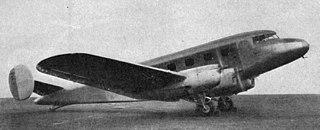
The Potez 661 was a four-engined metal low-wing monoplane airliner developed in France just before World War II. The single example flew with Air Afrique on French colonial routes.
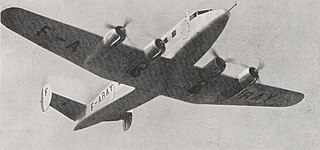
The Potez 662 was a higher powered and faster development of the Potez 661. Like its predecessor, it was a low wing, four engine monoplane carrying 12 passengers. Only one was built, serving with the French Air Ministry.

The Loire-Nieuport 161 was a single-seat, single-engine, all-metal, low-wing monoplane fighter designed and built in France in 1935 to compete for a government contract. Accidents delayed its development and only three prototypes were completed.

The Blériot-SPAD S.91 was a French light-weight fighter aircraft. It would be later developed into the Blériot-SPAD S.510, the last biplane produced by the French aeronautic industries.

The Société Française de Construction Aéronautique (SFCA) was an aircraft manufacturing company based in Buc, France.

The Lorraine Hanriot LH.130 is a French racing aircraft designed and built in the early 1930s, to compete in the Coupe Michelin air races.
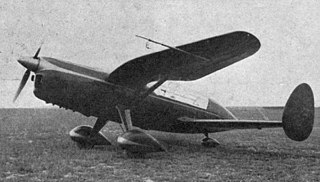
The Delanne 20-T was a French tandem wing aircraft designed as an aerodynamic model for a larger fighter aircraft. It was tested during 1939.

The SFCA Maillet 20 was a French three seat tourer built in 1935. The Armée de l'Air ordered 30 for training and liaison and several were raced. The aircraft was developed through 1935 via cockpit layout and canopy changes to the provision of retracting landing gear.

The SFCA Lignel 10 was a French single seat aircraft designed to bridge a training gap between basic trainers and front-line fighters. The military requirement was soon dropped and only one was built.
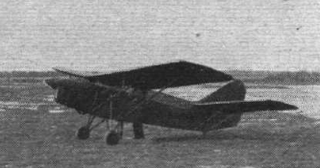
The SFCA Taupin was a French tandem-wing aircraft, designed to provide a simple, stable and safe aircraft able to take-off and land in small spaces.

The Dewoitine D.430 was a three-engine, high-wing monoplane designed for policing and other roles in France's colonies. It did not go into production.

The Morane-Saulnier MS.350 was a French aerobatic trainer flown in 1936. Only one was built but it had a long career, flying post-war until the 1960s.
The Caudron C.860 was a single engine, single seat monoplane ordered by the French government as a long distance communications aircraft. First flown in 1938, it was also expected to set speed and altitude records but the outbreak of World War II ended developments.
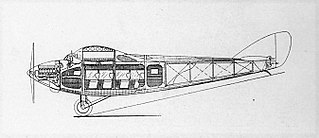
The Nieuport-Delage NiD 540 was a high wing, eight seat, single engine airliner, built in France and first flown in 1930. It did not reach production.
The Neiuport-Delage NiD 690 was a French all-metal, single-engined colonial policing aircraft, built for a competitive government contract. Its unusual rear fuselage gave a wide field of downward machine gun fire. Only two examples were built.
The Dewoitine D.720 T3 was a French reconnaissance/cooperation aircraft built by Dewoitine in the late 1930s.
The SFCA Lignel 161 was a French trainer aircraft built in the late 1930s.
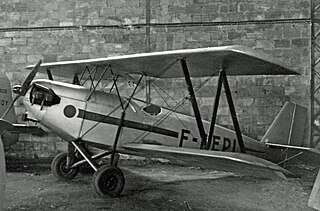
The SCAL FB.40 was a French, side-by-side seat biplane trainer chosen in 1938 for widespread use in the Aviation Populaire programme. The Second World War prevented large scale production but at least two were restored post-war, one becoming a familiar rally participant.
The SCAL FB.30 was a French twin boom, pusher configuration, two seat civil sport and touring aircraft designed by Antoine Bassou in the mid-1930s. Three, with different engines, were built and flown.
















